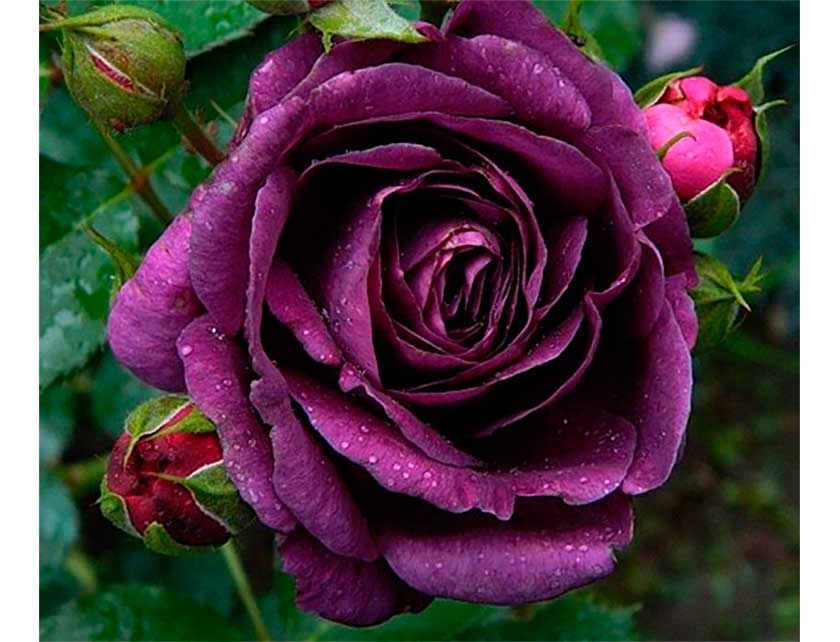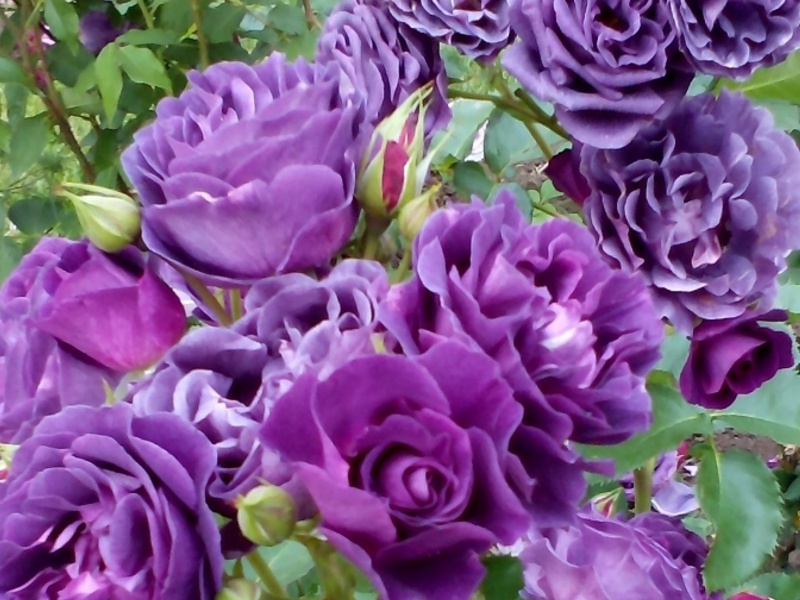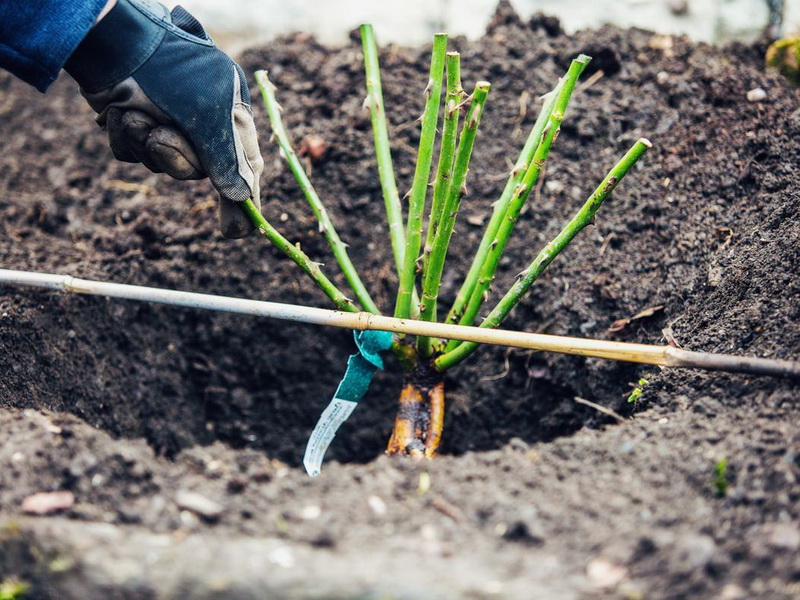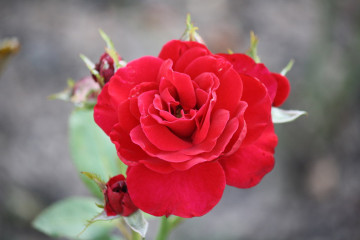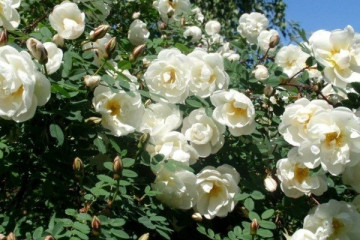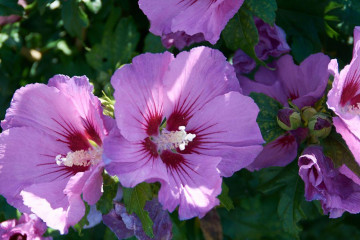Rose Minerva - growing floribunda
Content:
Minerva is a beautiful representative of roses, part of the floribund group, will be a worthy decoration of the site. The article will tell you about growing and caring for an unusual plant.
Rose Minerva
The variety is re-blooming and resembles double flowers. Bud 8 cm with 20-39 petals. Erect shrub, up to 60 cm wide, maximum height 80 cm. The color is purple with dark lilac or blue notes. Golden stamens are visible in the inflorescence. The leaves are large, matte. The smell is strong with sweet notes.
Bred in 2010 by crossing Sharonse Love and Marie-Louise Welge in Belgium. The authorship belongs to the breeder Martin Visser. The unique Minerva rose is named after a machine manufacturer.
Pros:
- bright aroma;
- unique colors;
- long-term storage after cutting;
- disease resistance;
- tolerates the bright sun.
Minuses:
- sharp thorns;
- does not tolerate prolonged rains and prolonged heat.
Rose Minerva is great for garden decoration.
Growing a flower
Like any hybrid, Minerva will not grow from a seed. For seedlings, use ready-made seedlings or a dug out bush. Landing is carried out approximately in April or when the ground warms up to 10-12 ° C.
The area should be selected taking into account access to sunlight and ventilation. He is calm about the neighborhood with other cultures. The neighborhood with the juniper is excluded - it can infect the rose bush with rust.
Before planting a bush, you should make sure that the land is suitable. It should be loose, nutritious and neutral in acidity. Landing in clay soil is not excluded. In this case, drainage is done, after which a nutrient mixture is added and the earth is filled up.
As a suitable seedling, last year's planting material with cut off the stem and leaves is used. It adapts to the soil and blooms faster than a young one. The seedling is cleaned of soil and placed in a vessel with liquid for 30-120 minutes, so that the root and the graft are in the water.
Step-by-step instructions for planting a rose:
- Dig up the soil thoroughly.
- The size of the hole depends on the root. It should be positioned freely, without embossing or kinking.
- Fertilizer is placed at the bottom: humus or manure.
- The plant is set in a hole, spud and watered abundantly.
Plant care
Rose Minerva tolerates moderate humidity. Water it as needed. During the period of prolonged rains, a canopy is built to exclude an excess of moisture. It is recommended to mulch the soil. This will protect against weeds and moisture stagnation.
Depending on the structure of the soil, fertilizing is carried out 1-2 times a month with organic and mineral fertilizers.
Pruning and transplanting is done in the spring to activate flowering and decorate the bush itself.
Minerva has good frost resistance down to -23 ° C. If the temperature drops below, insulation is required.The bush is covered with moss or sawdust. The protruding stems are covered with peat and earth.
Blooming rose
Rose Minerva is a multi-flowering plant. Activity can be traced from early summer to September. In some regions, it does not stop blooming until the first frost. In greenhouse conditions, it blooms all year round. In winter, the bush "falls asleep" and gains strength.
For productive flowering, in the second half of summer, fertilizing based on phosphorus and potassium is used, and the soil is regularly loosened. After flowering, old, spoiled shoots and future seedlings are separated from the bush.
Rose of the Minerva variety, despite the description of the quality of the seedling, may not bloom for the following reasons:
- the seedling is not a year old;
- unheated air or sudden temperature changes;
- bad light;
- root damage;
- there is not enough fertilizer;
- stagnant moisture;
- early disembarkation.
After diagnostics, it is necessary to eliminate the cause of inhibition of flowering. Most likely, you will need a transplant or pruning of the bush.
Flower propagation
The procedure is performed in late summer and early autumn. The signal is the process of falling of petals and leaves.
Floribunda Minerva propagates by cuttings. That is, for the purpose of reproduction, part of the stem is separated from the bush. The only condition is that the stalk must be in the stage of numbing. Further, the stock is grown from the rosehip. This is a special plant to which you can grow a bud or root from another flower. A seal is formed at the junction, which is called a graft.
The seedling is covered with earth and placed in a bag. Stored at 0-2 ° C in a dark place. This will strengthen the grafting, and the hybrid planting material will gain strength before planting.
Diseases, pests and ways to control them
Despite being immune to pests and diseases, the bush can get black spot. Copper solutions and soil treatment with fungicides will help to get rid of. Sometimes circumcision of the affected area is required.
If the plant is often exposed to stagnant moisture, drainage and pruning of rotten leaves and buds will help.
Among the pests, the most dangerous is the common aphid. To combat it, specialized drugs are used that can be bought at any gardening store.
Rose Minerva can become a real pride of a gardener. Leaving does not require unnecessary costs and efforts. The bush has good immunity and medium resistance to moisture and frost.
